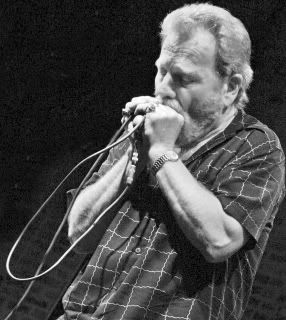
Veteran harp player Bill Lupkin gave fans a
lesson in the blues during a concert at the
Terrace Bay Inn on Aug. 27.
By STEVE SEYMOUR
If you like the harmonica, or harp as it's called in the blues, you'll really like Bill Lupkin.
A harp master, Lupkin shared his passion for the instrument during a concert at the Terrace Bay Inn on Aug. 27.
Going to a Lupkin show is entertaining, of course, but it's also a history lesson in the blues harp.
He told the audience about his encounters with many of the genre's top stars and played songs to illustrate his stories.
Born in 1947, he learned his chops backing some of Chicago's blues greats including Jimmy Rogers, Muddy Waters and Howlin' Wolf.
When he made his life-changing move to the Windy City in 1969, Lupkin said he "was just a kid from Fort Wayne who wanted to play the blues."
Almost immediately, he fell in with the Aces, including Louis and Dave Myers and Fred Below, the band known for working with Little Walter Jacobs.
"I got into the thick of it right away," Lupkin told the Upper Peninsula audience.
Recalling his early days in Chicago, Lupkin played his take on Little Walter's "Juke." The tune, from 1952, became the bluesman's first and biggest solo hit, although he still worked as Muddy Waters' harp player.
Lupkin gave the instrumental standard his own brand while retaining the original's mythic appeal.
When the Aces went on a European tour, they left the young newcomer behind in favor of veteran harpist Carey Bell.
Consequently, Lupkin moved on to a job playing harp with Jimmy Rogers and Johnny Littlejohn.
Rogers was another member of Muddy Water's band enjoying a solo career, while Littlejohn played guitar for both Rogers and Howlin' Wolf.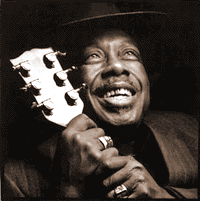
Jimmy Rogers
Calling Rogers his "greatest inspiration and influence," Lupkin delivered his version of "Walking By Myself," Rogers' biggest song, dating from the 1950s.
Lupkin told the audience he played steady gigs with Rogers and Littlejohn at a club called Ma Bea's, located at Madison and Sacramento on Chicago's west side.
"We played every Sunday and Monday," Lupkin recalled.
Howlin' Wolf played at the nearby Big Duke's Blue Flame Lounge, and stopped by Ma Bea's one night. "Howlin' Wolf never went to see other bands play, after all he was Howlin' Wolf," Lupkin said.
"You know he's critiquing you," Lupkin said of Wolf's stop. Besides visiting, Wolf sat in with the band, Lupkin remembered.
In recognition of that night, Lupkin performed "Killing Floor," one of Wolf's greatest numbers. Originally recorded in 1966, the influential song has been covered by many artists over the years.
Lupkin acknowledged Wolf as "definitely" the King of Chicago blues, edging Muddy Waters.
Lupkin was also present when Waters joined Rogers on stage in a historic reunion.
Marking the occasion, Lupkin played a foot-stomping take on "Mannish Boy," the Waters' hit from 1955.
Still in his early 20s, Lupkin honed his harp skills as a regular in the Jimmy Rogers band, from 1969 to 1972.
Then, he traveled with Rogers to Los Angeles where the blues legend recorded a comeback album. Lupkin appeared on most of the cuts, but was uncredited on the album. 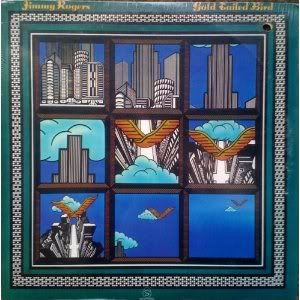
Titled "Gold Tailed Bird" the long-player contained "Live at Ma Bea's" an instrumental salute to the famed Chicago club where Rogers and Lupkin had gigged twice a week.
Released on Leon Russell's Shelter Records, the project was co-produced by Texas guitar legend Freddie King.
In his recent concert, Lupkin played Rogers' "Rock This House" as well as the original composition "Fine Little Thing," saying it was inspired by the late Chicago bluesman.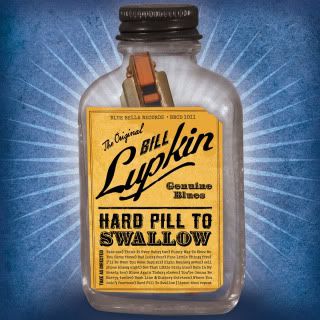
While Lupkin performed well-chosen cover songs, he also played flawless harp on his well-crafted originals, including "Cell Phone Blues" and "I'll Get Over You Someday."
His chromatic work on "Bad Luck" puts that song into your head and keeps it there.
Responding to whoops and hollers from the audience, Lupkin ended his 20-track live set with a fired-up "Got My Mojo Workin'," popularized by Muddy Waters in 1957.
Sponsored by Wendy Pepin's Blues for a Cause, profits from the concert benefited Perspectives Adult Day Care in Escanaba.
During the show Lupkin demonstrated his expertise on his Hohner harmonicas and proved to be a seasoned vocalist as well.
Lupkin's crack band was comprised of brother Steve on stand-up bass, Jeff Joswiack on guitar and Tino Cortez on drums.
Throughout the evening the audience was very receptive to Lupkin's fat-toned harp sound, augmented by precise guitar work, thumping bass and rhythmic drumming from his musical cohorts.
Certainly, Lupkin's sound reflects his decades of experience, but he has also spent years away from the music business.
In the mid 1970s, the harpist sought success in Los Angeles, but became disillusioned, returning to Indiana where he raised a family of six children.
Before and after his stint in music, Lupkin made his living making stained glass.
Since 1994, he has created and restored stained glass and mosaic works under the name William L. Lupkin Designs.
The harpist didn't cut any music as a band leader until "Live at the Hot Spot" emerged on the Blue Loon label in 1999.
That CD, credited to Bill Lupkin and the Chicago Blues Coalition, was recorded at a club in Fort Wayne. The players included regional blues favorites Billy Flynn on guitar and Barrelhouse Chuck on keyboards. 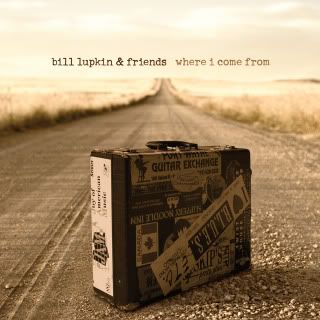
Now signed to Nick Moss's Blue Bella label, Lupkin released "Where I Come From" in 2006 and "Hard Pill to Swallow" a year later.
Both discs feature all original material and were produced by Moss, one of the hottest players on the Chicago blues scene today.
You can't fault Lupkin for bragging about playing with Jimmy Rogers, Muddy Waters, Howlin' Wolf, Junior Wells, Buddy Guy and so many others.
In the liner notes for "Hard Pill to Swallow," he says performing with the great blues players in Chicago "was a college education."
That Lupkin is willing to share those experiences in concert is fortunate for us.

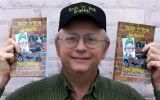
 I've enjoyed rock music and writing since I was a teenager in the 60s. I feel lucky to have been around when rock's greatest stars created their most enduring hits. At the same time I found I enjoyed writing, as well. I worked on my high school newspaper and magazine, was editor of several college publications and earned a bachelor's degree from Central Michigan University in 1973. I worked for the daily newspaper in my hometown after graduating, becoming managing editor after a few years. By the 1980s, I moved into public relations. In 1985, my wife Sue and I opened a retail music store, The Record Rack, which we still own. Rock 'n' roll has been integral to me and for the last 2O years I've been earning my living from it even though I don't have a musical bone in my body. In recent years, I've also I edited a small local magazine and launched a micro FM radio station. Now, I'm finally combining my love of writing and rock 'n' roll. I can't sing a note, but I know what I like. I'll tell you all about it when you read on. I hope you have as much enjoyment reading these installments as I've had writing them.
I've enjoyed rock music and writing since I was a teenager in the 60s. I feel lucky to have been around when rock's greatest stars created their most enduring hits. At the same time I found I enjoyed writing, as well. I worked on my high school newspaper and magazine, was editor of several college publications and earned a bachelor's degree from Central Michigan University in 1973. I worked for the daily newspaper in my hometown after graduating, becoming managing editor after a few years. By the 1980s, I moved into public relations. In 1985, my wife Sue and I opened a retail music store, The Record Rack, which we still own. Rock 'n' roll has been integral to me and for the last 2O years I've been earning my living from it even though I don't have a musical bone in my body. In recent years, I've also I edited a small local magazine and launched a micro FM radio station. Now, I'm finally combining my love of writing and rock 'n' roll. I can't sing a note, but I know what I like. I'll tell you all about it when you read on. I hope you have as much enjoyment reading these installments as I've had writing them.


No comments:
Post a Comment